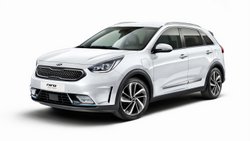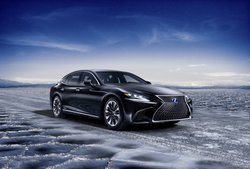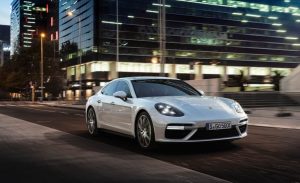More Plug-ins Are Coming

The 87th International Geneva Motor Show (in March 2017) saw a huge variety of new cars being showcased, from concepts to upcoming production cars. Here at Clean Fleet Report, a few of the upcoming production cars caught our eye because they will offer new heights in fuel economy.
Many of you are familiar with Kia’s Niro hybrid, but this year in Geneva, Kia unveiled its new Niro plug-in hybrid.
Important for this model is its new 8.9-kilowatt-hour (kWh) battery, which replaces the standard hybrid model’s 1.56-kWh battery. It promises to give the Niro PHEV an electric-only range of about 25 miles. This estimated range would keep the Niro PHEV competitive with one of its main rivals, the Toyota Prius Prime.
A Lexus Hybrid Flagship

Lexus also revealed its new 2018 LS 500h luxury hybrid sedan, which looks identical to the standard LS 500, but features a V6 gasoline engine paired with two electric motors and a small lithium-ion battery. Total power is rated at 354 horsepower which is delivered through a multi-stage hybrid transmission that acts like a 10-speed gearbox. It will replace the LS 600h, which we reviewed last year.
Expected to compete directly with Mercedes-Benz and Tesla, the LS 500h appears to be a strong step forward for the Lexus luxury brand, which has been struggling to balance style and performance in recent years. Prices for the LS 500h have not yet been announced, however prices should start around the Tesla Model S base price of $70,000, a significant drop from the previous model.
Plug-in Power from Porsche
It is not very often that a twin-turbo V8 is featured on Clean Fleet Report, but Porsche gives us the opportunity with the unveiling of its Panamera Turbo S E-Hybrid. The Turbo S E-Hybrid features a 4.0-liter twin-turbocharged V8 engine and a 100-kilowatt electric motor mated to the gearbox via an electronic clutch. Overall power is stated as 680 horsepower with 627 pounds-feet of torque.
As a plug-in hybrid, the Turbo S E-Hybrid is able to cruise for up to 31 purely electric miles while in its “E-Power” drive mode. Power for the electric motor comes from a liquid-cooled 14.1 kWh lithium-ion battery which can be Level 2 recharged in six hours with the standard 3.6-kW onboard charger or around 2.4 hours with the optional 7.2 kW charger. Overall MPGe is rated at 81.1 when factoring in the full electric range.

Ford Offers Eco Power
While not an EV or a hybrid, Ford debuted its next generation Fiesta ST which features an all-new 1.5L three-cylinder turbocharged EcoBoost engine–the first three-cylinder motor for the Ford Performance division. Power output is rated at 197 hp, and 0-62 mph acceleration is announced at 6.7 seconds.
Even with the fuel efficient nature of a three-cylinder engine, the 1.5L EcoBoost comes equipped with cylinder deactivation, which shuts off one cylinder when it is not needed, increasing efficiency and reducing emissions. The new Fiesta ST will officially launch across European markets in early 2018.

3 thoughts on “2017 Geneva Motor Show: New Heights in Efficiency”